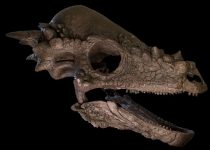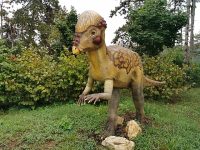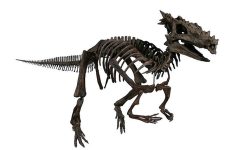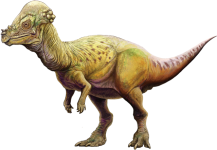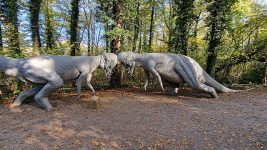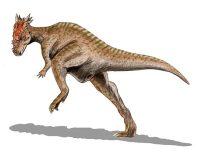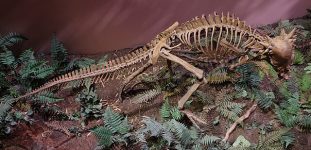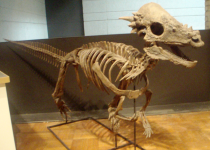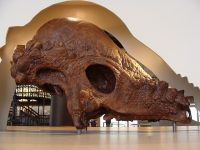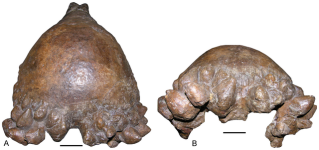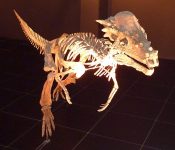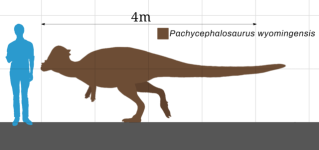Pachycephalosaurus
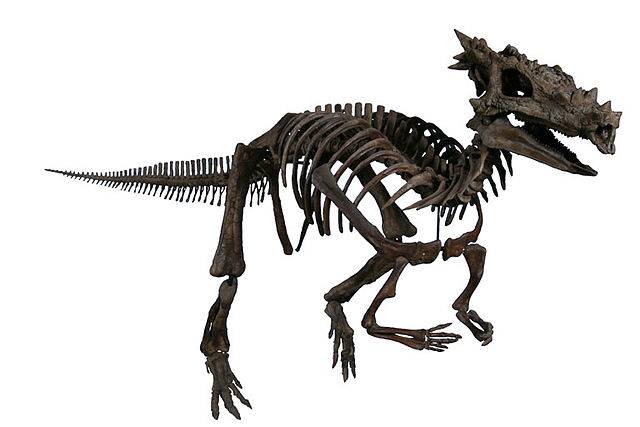
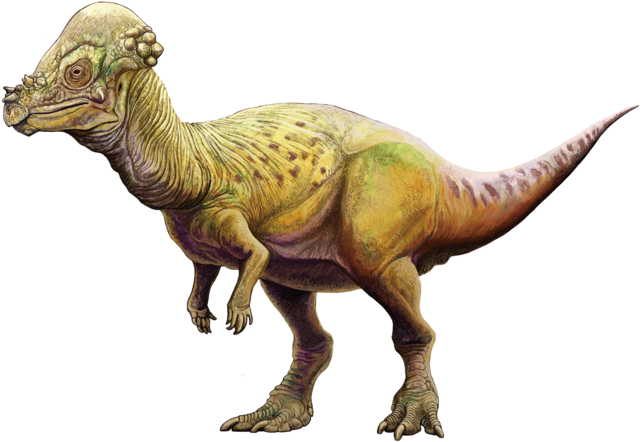
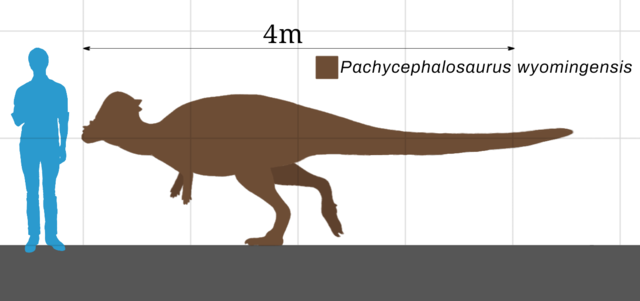
PACHYCEPHALOSAURUS
Pachycephalosaurus is a genus of herbivorous dinosaur known for its distinctive thick, domed skull.Pachycephalosaurus is important in understanding dinosaur evolution and behavior, particularly the adaptations for display and social interaction seen in some dinosaurs. Its thick skull dome has sparked much scientific interest and speculation, with ongoing research to understand its growth, function, and evolutionary origins. Here are some key details about Pachycephalosaurus:
SIZE AND ANATOMY:
- Skull Dome: The most prominent feature of Pachycephalosaurus is its thick, dome-shaped skull. The skull dome could be up to 25 cm (10 inches) thick in adult individuals, with a rounded shape that likely served as a form of display or for intra-species combat.
- Size: Pachycephalosaurus was a medium-sized dinosaur, reaching lengths of about 4.5 meters (15 feet) and standing around 2.5 meters (8 feet) tall. It weighed approximately 450 kilograms (1,000 pounds).
- Posture: It had a bipedal stance, walking on its hind legs, which were robust and ended in three-toed feet suitable for carrying its weight.
BEHAVIOR AND ECOLOGY
- Pachycephalosaurus was an herbivore, meaning it primarily fed on plants. Its teeth were small and serrated, suited for cropping vegetation rather than tearing flesh.
Habitat and Distribution:
- Pachycephalosaurus lived during the Late Cretaceous period, approximately 70-65 million years ago.
- Fossils have been found in North America, particularly in Montana, South Dakota, and Wyoming, indicating it inhabited a range of environments from plains to forested areas.
- Social Structure: While not definitively proven, it is believed that Pachycephalosaurus may have lived in small groups or family units, potentially exhibiting complex social behaviors.
- Head-Butting Hypothesis: One of the most debated aspects of Pachycephalosaurus behavior is whether it engaged in head-butting contests. Some scientists hypothesize that males may have used their thick skull domes to compete for mates or establish dominance within their social groups.
FOSSILS AND DISCOVERY:
- Pachycephalosaurus was first discovered in the late 19th century in North America, specifically in Montana, USA.
- Its name “Pachycephalosaurus” means “thick-headed lizard,” derived from Greek words referring to its thick skull roof.
CLASSIFICATION
- Kingdom: Animalia – Pachycephalosaurus belongs to the kingdom Animalia, as it is a multicellular, eukaryotic organism.
- Phylum: Chordata – Pachycephalosaurus is classified under the phylum Chordata, as it possesses a dorsal nerve cord, notochord (at least in early development), pharyngeal slits, and a post-anal tail at some point in its life cycle.
- Class: Reptilia – Pachycephalosaurus falls within the class Reptilia, as it was a reptilian dinosaur.
- Superorder: Dinosauria – Pachycephalosaurus is classified under the superorder Dinosauria, which includes all dinosaurs.
- Order: Ornithischia – Within the superorder Dinosauria, Pachycephalosaurus belongs to the order Ornithischia. Ornithischian dinosaurs are characterized by their bird-like hips and include herbivorous dinosaurs such as hadrosaurs and ceratopsians.
- Suborder: Marginocephalia – Pachycephalosaurus is specifically classified under the suborder Marginocephalia, which includes dinosaurs with distinctive bony frills or domes on their skulls. This suborder also includes ceratopsians like Triceratops.
- Family: Pachycephalosauridae – Pachycephalosaurus belongs to the family Pachycephalosauridae, a group within the suborder Marginocephalia. This family includes other dome-headed dinosaurs such as Stegoceras and Dracorex.
- Genus: Pachycephalosaurus – Pachycephalosaurus is the genus name, referring specifically to this genus of dome-headed dinosaurs.
- Species: There is one recognized species within the genus Pachycephalosaurus:
- Pachycephalosaurus wyomingensis
FUN FACTS:
- Head Dome: Pachycephalosaurus is known for its thick, domed skull roof. The skull could be up to 25 cm (10 inches) thick in adults, suggesting it was used for head-butting behaviors such as intra-species competition or mating displays.
- Size and Build: Pachycephalosaurus was a medium-sized dinosaur, measuring around 4.5 meters (15 feet) in length and weighing about 450 kilograms (1,000 pounds). Its robust build and powerful legs indicate it was a strong and agile animal.
- Late Cretaceous Period: Pachycephalosaurus lived during the Late Cretaceous period, approximately 70-65 million years ago. It was part of the diverse dinosaur fauna that inhabited North America during this time.
- Paleontological Debate: The function of Pachycephalosaurus’ thick skull dome has been a topic of scientific debate. While initially thought to be primarily used in head-butting behavior, some scientists now propose it may have served other purposes, such as thermoregulation or species recognition.
